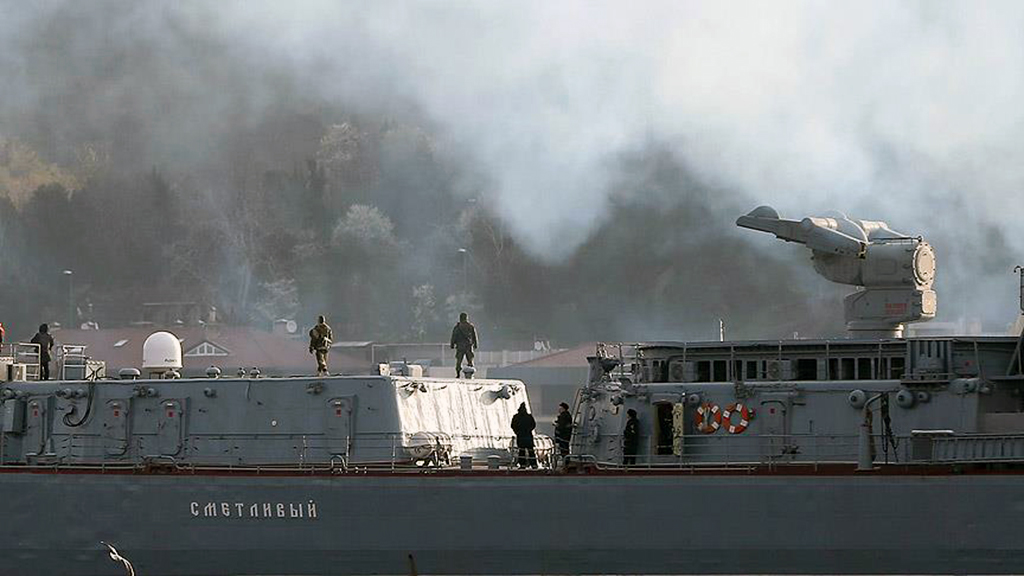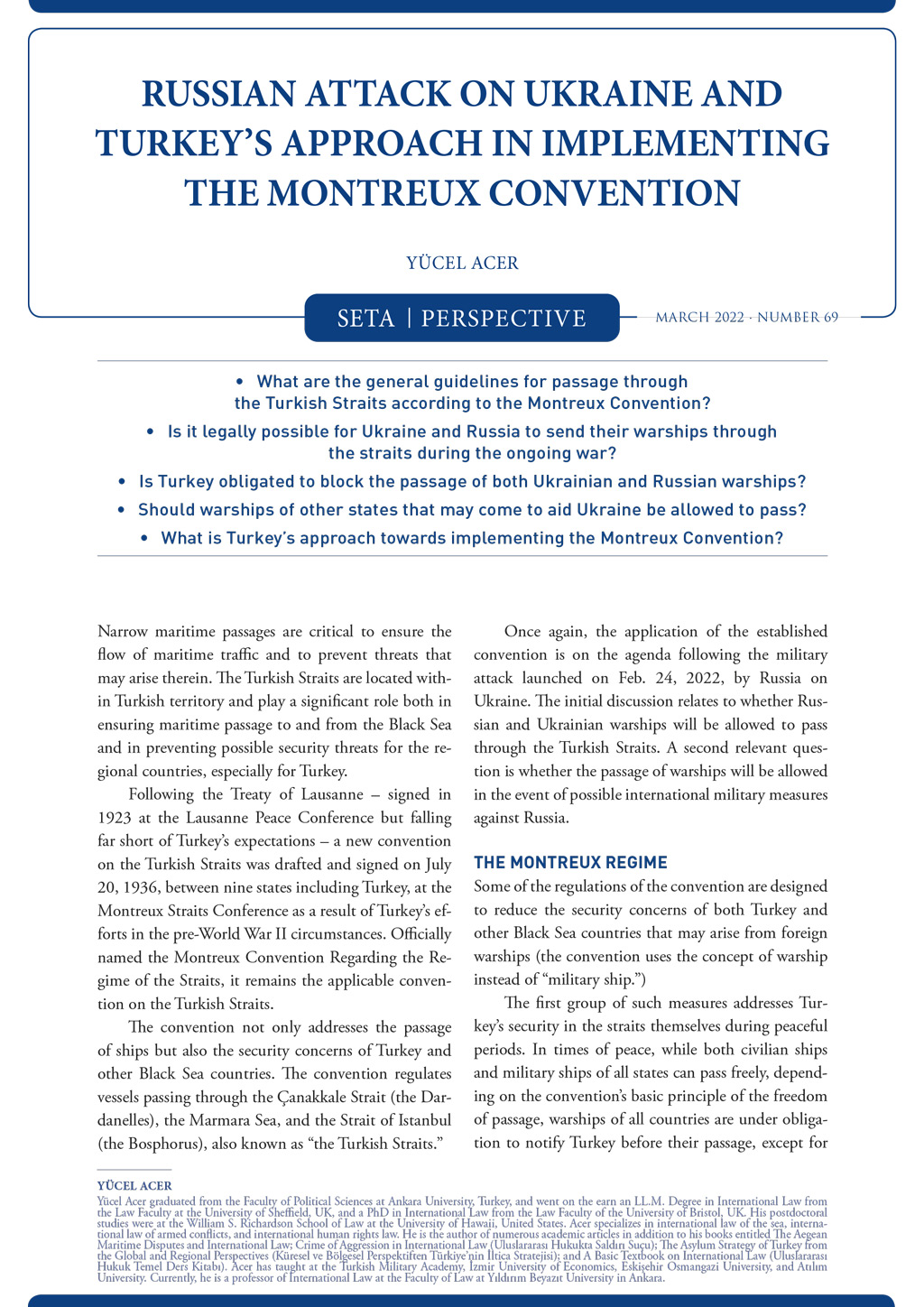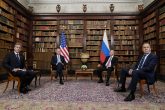Narrow maritime passages are critical to ensure the flow of maritime traffic and to prevent threats that may arise therein. The Turkish Straits are located within Turkish territory and play a significant role both in ensuring maritime passage to and from the Black Sea and in preventing possible security threats for the regional countries, especially for Turkey.
Following the Treaty of Lausanne – signed in 1923 at the Lausanne Peace Conference but falling far short of Turkey’s expectations – a new convention on the Turkish Straits was drafted and signed on July 20, 1936, between nine states including Turkey, at the Montreux Straits Conference as a result of Turkey’s efforts in the pre-World War II circumstances. Officially named the Montreux Convention Regarding the Regime of the Straits, it remains the applicable convention on the Turkish Straits…




